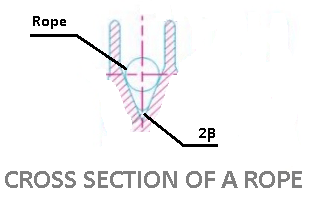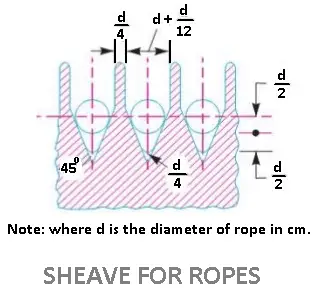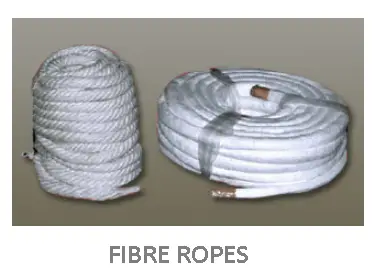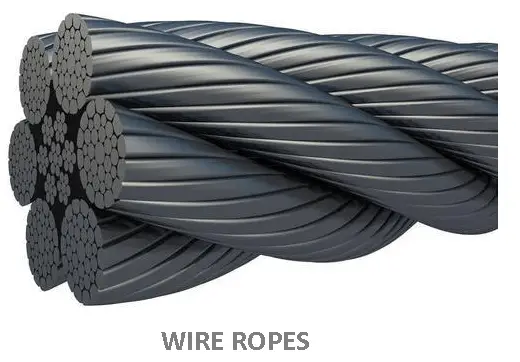In this article, you’ll learn what is rope drive. and types of rope used for the transmission of power.
What is Rope Drive?
The rope drive is widely used where a large amount of power is to be transmitted, from one pulley to another, over a considerable distance. Rope drives use a number of circular section ropes, rather than a single flat or vee belt.

It may be noted that the use of flat belts is limited for the transmission of moderate power from one pulley to another when the two pulleys are not more than 8 meters apart.
One of the main advantages of rope drive is that many drives may take from the one-driving pulley. Rope drives were most widely used as power transmission in mills and factories

Sheave for Ropes
- The diameter of the sheaves should be large to reduce the wear on the rope due to internal friction and bending stresses.
- The proper size of sheave wheels is 40 d and the minimum size is 36 d.
Types of Ropes
The rope drive uses the following two types of ropes:
- Fibre Ropes
- Wire ropes.
The fiber ropes operate successfully when the pulleys are about 60 meters apart, While the wire ropes are used when the pulleys are up to 150 meters apart.
Fibre Ropes
The ropes for transmitting power are usually made from fibrous, materials such as hemp, manila, and cotton. Since the hemp and manila fibers are rough, the ropes made from these fibers are not very flexible and possess poor mechanical properties.

The hemp ropes have less strength as compared to manila ropes. When the hemp and manila ropes are bent over the sheave (or pulley), there is some sliding of fibres, causing the rope to wear. To minimize this defect, the rope fibers are lubricated. The lubrication also makes the rope Moisture-proof.
The fiber ropes are usually circular in cross-section. The groove angle of the pulley for rope drives is usually 45°. The grooves in the pulley are made narrow at the bottom and the rope is pinched between the edges of the v-groove to increase the holding power of the rope on the pulley.
Wire Ropes
When a large amount of power is to be transmitted over long distances from one pulley to another (i.e.when the pulleys are up to 150 meters apart), then wire ropes are used.

The wire ropes are widely used in elevators, mine hoists, cranes, conveyors, hauling devices, and suspension bridges. The wise ropes run on grooved pulleys but they rest on the bottom of the grooves and are not wedged between the sides of the grooves.
The wire ropes have the following advantage over cotton ropes.
- Wire ropes are lighter in weight,
- these offer silent operation,
- These can withstand shock loads.
- Wire ropes are more reliable,
- They do not fail suddenly, These are more durable,
- The efficiency is high
- Less expensive or low in cost
If you like our article on “rope drive” then share it with your friends. If you have any questions leave a comment.
Subscribe to our newsletter to get notifications.
Read also:
- Belt Drives and Types of Belt Drives
- Gears, Type of gears, Gear terminology, and Gear trains.
- What Are Different Types of Pulleys?
FAQs
A rope drive is a kind of belt drive used for mechanical power transmission. Rope drives use many circular section ropes instead of a single flat or V-belt.
Rope drive is mostly used for long-distance power transmission. When utilizing a distance power transmission system, rope drives are used to drive systems that are farther apart than 8 meters.
A rope drive transfers power from one system to another via a rope. It differs from a belt drive in that power is transmitted without the use of a belt.
Enjoy reading your posts for educational purposes. Thanks
I’m glad you liked it. You’re welcome.